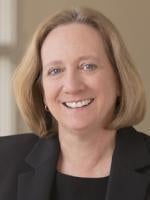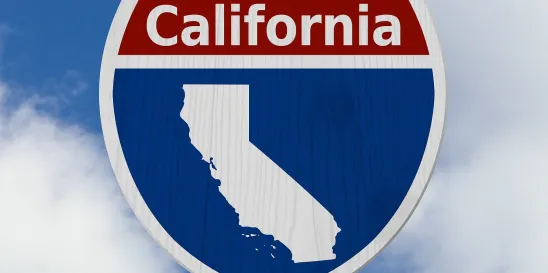On October 4, 2023, California Governor Gavin Newsom signed Senate Bill (SB) No. 616 into law, which expands California’s mandatory paid sick leave from three days (or twenty-four hours) to five days (or forty hours). The increased paid sick leave requirements take effect on January 1, 2024.
Background
In 2014, California enacted the Healthy Workplaces, Healthy Families Act of 2014 (“HWHFA”), providing California employees with paid sick leave. The HWHFA became effective on July 1, 2015, and has been amended slightly throughout the years.
Under the existing law, eligible employees accrue paid sick days at the rate of one hour per every 30 hours worked, beginning at the commencement of employment. The HWHFA applies to full-time, part-time, and temporary workers who work for the same employer for at least 30 days within a year in California and complete a 90-day employment period before taking any paid sick leave. Upon the oral or written request of an employee, an employer must provide paid sick days for the following purposes:
- Diagnosis, care or treatment of an existing health condition of, or preventive care for, an employee or an employee’s family member; and
- For an employee who is a victim of domestic violence, sexual assault or stalking.
The law defines “family member” to include the following individuals: child, (which means a biological, adopted or foster child, stepchild, legal ward or a child to whom the employee stands in loco parentis regardless of age or dependency status); a biological, adoptive or foster parent, stepparent or legal guardian of an employee or the employee’s spouse or registered domestic partner or a person who stood in loco parentis when the employee was a minor child; a spouse; a registered domestic partner; a grandparent; a grandchild; a sibling; and a designated person (which means a person identified by the employee at the time the employee requests paid sick days). An employer may limit an employee to one designated person per 12-month period for paid sick days.
Although these basics remain the same under SB 616, the new law amends various provisions of HWHFA, requiring employers to revise their California paid sick leave policies with respect to accrual, frontloading, carryover and use caps – among other areas – to ensure compliance.
Accrual and Carryover: Under California law, accrued paid sick days must carry over to the following year and use-it-or-lose-it policies are prohibited. However, California employers may set a threshold accrual cap, meaning that once an employee accumulates an amount of leave that equals the “cap” amount, they stop accruing, but once they use leave and their banked time falls below the cap, they immediately restart accruing leave. The accrual cap also operates as a cap on the amount of unused leave employees can carry over from one year to the next.
- Current law under HWHFA: Currently, an employee’s banked, accrued paid leave may be capped at 48 hours or 6 days – whichever is greater.
- Law under SB No. 616, effective January 1, 2024: SB 616 increases the cap to 80 hours or 10 days – whichever is greater.
Alternative Accrual Rates: Instead of using the standard accrual rate of one hour for every 30 hours worked, employers may use a different accrual method, as long as the method meets certain requirements.
- Current law under HWHFA: Currently, instead of using the standard accrual rate, the HWHFA allows employers to use a different accrual rate as long as employees accrue leave on a regular basis resulting in them having no less than 24 hours of accrued leave by the completion of their 120th day of employment and having that same amount by the completion of the 120th day in each subsequent year.
- Law under SB No. 616, effective January 1, 2024: SB 616 amends this accrual exception to require that, in addition, employees have accrued no less than 40 hours (or 5 days) of leave by the 200th day of employment and that same amount by the 200th day in each subsequent year.
Frontloading: Instead of accrual and carryover, the HWHFA allows employers to frontload a specific amount of paid leave each year.
- Current law under HWHFA: Currently, the law requires employers that frontload to provide 24 hours or 3 days – whichever is greater.
- Law under SB No. 616, effective January 1, 2024: SB 616 increases the frontload requirement to 40 hours or 5 days – whichever is greater.
NOTE: Although state law allows employers to frontload leave annually to avoid carryover, that may not be permitted under similar local ordinances throughout California, as some local laws require employers to carry over frontloaded leave.
Timing of the Frontload Distribution: Employers that frontload are allowed to impose a lengthier waiting period for new hires than what the HWHFA otherwise allows when accrual is used (i.e., an 89-day waiting period).
- Current law under HWHFA: Currently, employers are allowed to provide no less than 24 hours or 3 days of paid leave for the employee to use by the time they complete their 120th day of employment.
- Law under SB No. 616, effective January 1, 2024: Under SB 616, in addition to providing the frontloaded 24 hours or 3 days of paid leave by the 120th day, employers must also ensure that the employee has no less than a total of 40 hours or 5 days of paid leave (between the initial 120 day frontloading and the subsequent 200 day frontloading) for the employee to use by the time they complete their 200th day of employment. Accordingly, this new provision essentially allows employers to provide the frontloaded amount in a piecemeal fashion rather than provide the entire lump sum at one time.
Use Caps: Although employers must allow accrued and frontloaded paid sick leave to carry over from year to year, an employer may limit an employee’s use of paid sick days in each year of employment, calendar year or 12-month period.
- Current law under HWHFA: Currently, the HWHFA allows employers to limit employees’ paid leave use per year to 24 hours or 3 days, whichever is greater.
- Law under SB No. 616, effective January 1, 2024: SB 616 increases the permitted annual use cap to 40 hours or 5 days – whichever is greater.
Covered Employers and Employees:
- Current law under HWHFA: Currently, the HWHFA does not apply to employees covered by a valid union collective bargaining agreement if that agreement meets certain requirements, such as providing paid leave and requiring binding arbitration.
- Law under SB No. 616, effective January 1, 2024: SB 616’s amendments extend some of the HWHFA’s protections, including the nonretaliation and procedural protections, to employees covered by collective bargaining agreements.
Preemption of Contradicting Local Laws: There are currently eight local ordinances addressing paid sick leave in California. SB 616 provides that certain provisions “shall preempt any local ordinance to the contrary.” Specifically, the new law partially preempts local California paid sick leave ordinances that have different requirements on the following topics: leave advances; balance notification requirements; employee notice requirements for unforeseeable and foreseeable leave; rate of pay for sick leave; timing of such pay; and reinstatement of leave upon rehire.
What Does SB 616 Mean for California Employers?
January 1, 2024 will be here before we know it, so employers whose paid sick leave policies do not already meet (or exceed) SB 616’s requirements must review and revise their policies as soon as possible to ensure they are in compliance by the effective date. We will be on the lookout for additional guidance from the state labor department as well as local jurisdictions that must determine whether and to what extent their local paid sick leave ordinances are affected by SB616’s partial preemption.





 />i
/>i
